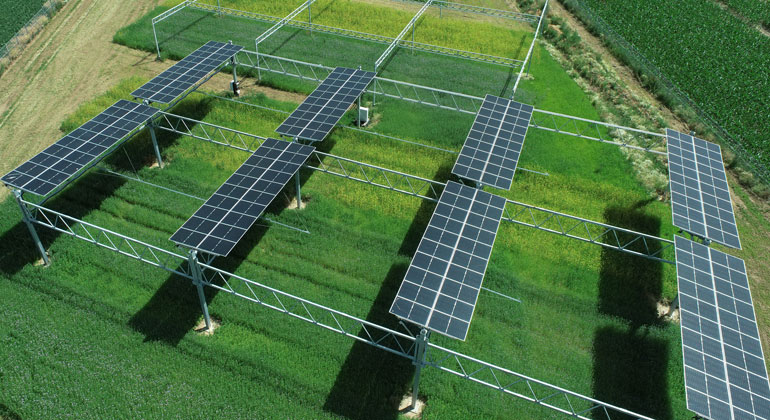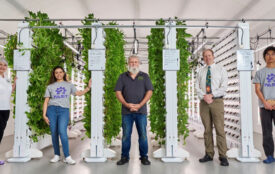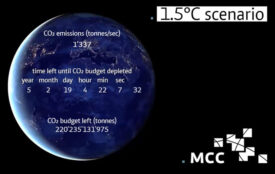Fast and Flexible Solar Energy From the Printer
Lighter, more flexible and adaptable – the innovation platform Solar TAP develops innovative solutions for photovoltaic applications. The aim is to make surfaces already used in agriculture, the building sector and transport additionally usable for the expansion of solar energy with printed solar cells.
Renewable energies are essential for the success of the energy transition and the desired independence from the import of fossil fuels. Their expansion must therefore be driven forward swiftly and massively. Photovoltaics (PV) – energy from the sun – is an important pillar in this respect. Of all renewable energies, PV has the lowest environmental footprint, i.e. it generates significantly more energy than is needed for its production.
Even though we need to add around 330 Gigawatt in Germany by 2040, this expansion does not automatically mean building new large-scale solar parks: thanks to flexible and efficient PV systems that utilize surfaces in agriculture or in the building sector to generate additional electricity from the sun. The potential for this is great: agricultural land in Germany offers the technical possibility to contribute up to 3 Terawatt (short for terawatt peak) to electricity generation. Solar cells integrated into existing facades could generate up to 1 Terawatt of solar power – for example, to supply electric cars with decentralized and mobile electricity in the future. But so far, just less than 0.1 percent of facade surfaces are used for PV.
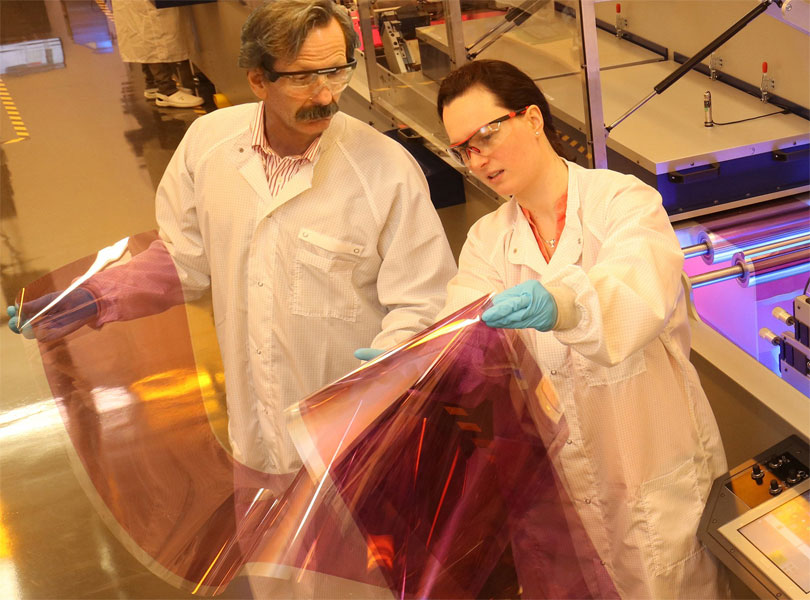
Multiple benefits: New potentials for the expansion of solar energy
Photovoltaics require surface area to produce electricity. In addition, PV can not “only” generate green energy, but can also offer further advantages in certain applications and thus generate multiple benefits for the respective application. Solar cells based on printed innovative PV technologies are particularly suitable for this “multi-benefit PV”. They are easily moldable, lightweight and flexible, and can be customized in terms of color and transparency.
The modules can also be designed in many different shapes and designs – depending on the application requirements. The cells can be applied to materials such as plastic, glass or metal, giving them additional functionality. This creates new potential for the expansion of PV in agriculture or the building sector, for example, but could also open up new opportunities in the transportation sector. Solar energy thus becomes usable in many places and can be integrated into existing structures.
From the lab to the application: Innovative partner network drives development
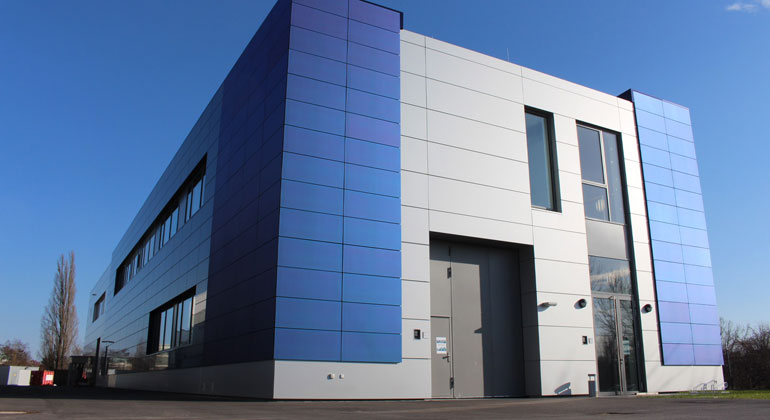
In the recently launched innovation platform Solar TAP (“Solar Technology Acceleration Platform for emerging Photovoltaics”), the technologies for these new multi-benefit PV applications are to be developed together with industrial partners. The Forschungszentrum Jülich, the Helmholtz-Zentrum Berlin and the Karlsruhe Institute of Technology want to make the results quickly and easily accessible to industry, society and end users via the platform.
Coordinated by the Helmholtz Institute Erlangen-Nürnberg for Renewable Energy (HI ERN), a branch of Forschungszentrum Jülich, the three research institutions form a closed value chain involving world-leading laboratories and experts from the Helmholtz Association.
In order to rapidly develop these new PV solutions to market maturity, Solar TAP is an open offer to industry: At the core is the technology transfer to a strong network of companies such as material suppliers, device manufacturers, producers and users who want to establish themselves in the field of multi-benefit PV. A joint roadmap forms the framework for the exchange between science and industry and is intended to ensure that the developments have a real-world relevance. The network is supported by application laboratories in which these new technologies are not only developed but also demonstrated.
Interview: Printable Solar Cells for Flexible Solar Energy
In their interview, Prof. Christoph Brabec and Dr. Jens Hauch (both HI ERN) as well as Prof. Eva Unger from Helmholtz-Zentrum Berlin (HZB) and Prof. Ulrich Lemmer from Karlsruhe Institute of Technology (KIT) explain how far the technology has come and which applications they have in mind. >> Interview
